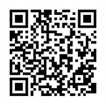笼统的“数字图书馆”包括两种:数字图书馆和数字化图书馆;前者是指提供电子图书的管理和服务系统平台,后者主要是把图书馆中的纸质图书扫描,OCR或者录入校正的作业平台;二者都含有图书馆的基本业务流程,例如编目;一般来讲数字化图书馆图书的分类是采用中图法,而数字图书馆的分类在采用中图法的同时会兼顾其他分类法;在形式上数字图书馆对采用图书服务网站的方式对外服务;而数字化图书馆是为图书馆服务,一般是一个由纸质到电子档的服务过程;
英文资料: The new digital libraries will have features not possible in traditional libraries, thereby extending the concept of library far beyond physical boundaries. They will provide innovative resources and services. One example is the ability to interact with information: rather than presenting a reader with a table of numbers, digital libraries allow users to choose from a variety of ways to view and work with the numbers, including graphical representations that they can explore. With the extensive use of hypertext links to interconnect information, digital libraries enable users to find related digital materials on a particular topic. (2001 PITAC Report, Digital Libraries: Universal Access to Human Knowledge , p. 3) Digital libraries are organizations that provide the resources, including the specialized staff, to select, structure, offer intellectual access to, interpret, distribute, preserve the integrity of, and ensure the persistence over time of collections of digital works so that they are readily and economically available for use a by a defined community or set of communities. (Digital Library Federation) Digital libraries are complex data/information/knowlege (hereafter information) systems that help: satisfy the information needs of users (societies), provide information services (scenarios), organize information in usable ways (structures), manage the location of information (spaces), and communicate information with users and their agents (streams). (Edward A. Fox, July 1999, according to 5S Framework) Digital library work occurs in the context of a complex design space shaped by four dimensions: community, technology, services and content (Gary Marchionini and Edward A. Fox, Progress toward digital libraries: augmentation through integration , pp. 219-225, guest editors introduction to Progress Toward Digital Libraries , eds. Gary Marchionini and Edward A. Fox, Special Issue, Information Processing & Management, 35(3), May 1999.) The field of digital libraries deals with augmenting human civilization through the application of digital technology to the information problems addressed by institutions such as libraries, archives, museums, schools, publishers and other information agencies. Work on digital libraries focuses on integrating services and better serving human needs, through holistic treatment irrespective of interface, location, time, language and system. Although substantial collections may be created solely for the use of individuals, we consider sharable resources one of the defining characteristics of libraries. Libraries connect people and information; digital libraries amplify and augment these connections. (Gary Marchionini and Edward A. Fox, Progress toward digital libraries: augmentation through integration , Information Processing & Management, 35(3):219-225, May 1999.) For a thoughtful discussion of definitions, approaches, and community perspectives on digital libraries see What are digital libraries? Competing visions by Christine L. Borgman, pp. 227-244, in Progress Toward Digital Libraries , eds. Gary Marchionini and Edward A. Fox, Special Issue, Information Processing & Management, 35(3), May 1999. The Digital Library is:The collection of services And the collection of information objects That support users in dealing with information objects And the organization and presentation of those objects Available directly or indirectly Via electronic/digital means. (The Scope of the Digital Library, Draft Prepared by Barry M. Leiner for the DLib Working Group on Digital Library Metrics, 1998) Digital library is a concept that has different meanings in different communities. To the engineering and computer science community, digital library is a metaphor for the new kinds of distributed data base services that manage unstructured multimedia data. To the political and business communities, the term represents a new marketplace for the world s information resources and services. To futurist communities, digital libraries represent the manifestation of Wells World Brain. The perspective taken here is rooted in an information science tradition. (Research and Development in Digital Libraries by Gary Marchionini, 1998) an organized data base of digital information objects in varying formats maintained to provide unmediated ease of access to a user community, with these further characteristics: - an overall access tool (e.g. a catalog) provides search and retrieval capability over the entire data base; - organized technical procedures exist through which the library management adds objects to the data base and removes them according to a coherent and accessible collections policy. (Peter Graham, Rutgers University Libraries, 1997) Digital libraries are a set of electronic resources and associated technical capabilities for creating, searching, and using information. In this sense they are an extension and enhancement of information storage and retrieval systems that manipulate digital data in any medium (text, images, sounds; static or dynamic images) and exist in distributed networks. The content of digital libraries includes data, metadata that describe various aspects of the data (e.g., representation, creator, owner, reproduction rights), and metadata that consist of links or relationships to other data or metadata, whether internal or external to the digital library. (1996 UCLA-NSF Social Aspects of Digital Libraries Workshop) Digital libraries are constructed -- collected and organized -- by a community of users, and their functional capabilities support the information needs and uses of that community. They are a component of communities in which individuals and groups interact with each other, using data, information, and knowledge resources and systems.In this sense they are an extension, enhancement, and integration of a variety of information institutions as physical places where resources are selected, collected, organized, preserved, and accessed in support of a user community. These information institutions include, among others, libraries, museums, archives, and schools, but digital libraries also extend and serve other community settings, including classrooms, offices, laboratories, homes, and public spaces. (1996 UCLA-NSF Social Aspects of Digital Libraries Workshop) Systems providing a community of users with coherent access to a large, organized repository of information and knowledge. (Clifford Lynch, 1995) systems providing a community of users with coherent access to a large, organized repository of information and knowledge. This organization of information is characterized by the absence of prior detailed knowledge of the uses of the information. The ability of the user to access, reorganize, and utilize this repository is enriched by the capabilities of digital technology (adapted from Interoperability, Scaling, and the Digital Libraries Research Agenda, report of the 1995 IITA DL Workshop) A library that has been extended and enhanced by the application of digital technology. Important aspects of the digital library that may be extended and enhanced include : - Collections of the library - Organization and management of the collections - Access of the library items and the processing of the information contained in the items - Communication of information about the items (Terry Smith, UCSB, 1995) The generic name for federated structures that provide humans both intellectual and physical access to the huge and growing worldwide networks of information encoded in multimedia digital formats. (The University of Michigan Digital Library: This Is Not Your Father s Library, Bill Birmingham, 1994) A digital library is a distributed technology environment which dramatically reduces barriers to the creation, dissemination, manipulation, storage, integration, and reuse of information by individuals and groups. (Edward A. Fox, editor, Source Book on Digital Libraries, 1993, pg. 65) A digital library is a machine readable representation of materials which might be found in a university library together with organizing information intended to help users find specific information. A digital library service is an assemblage of digital computing, storage, and communicate machinery together with the software needed to reprise, emulate, and extend the services provided by conventional libraries based on paper and other material means of collecting, storing, cataloging, finding, and disseminating information. (Edward A. Fox, editor, Source Book on Digital Libraries, 1993, pg. 65)
参考资料:
把磁带等有声资料变成数字模式进行存储就是把纸质的书籍扫描。简单的说就是改变了原来的存储模式和存储介质,例如变成word文档或pdf文档、录入进计算机的数据库中,方便大家不再受地域限制的获取知识和信息
图书馆的主要功能是为人们提供信息。随着信息技术的发展,图书馆所收集信息的载体也发生了变化,转变为光盘、软盘等电子载体,有人因此将其称作为电子图书馆。而网络技术的发展又使得图书馆突破了传统上的地域和时间的限制,使人们在任何时候、任何地方都可以访问图书馆的信息,因此又有人称其为无墙图书馆。这种图书馆甚至可以是无形的,不再是真实存在的实体,于是又被称作为虚拟图书馆。这些信息都是以二进制的形式存储,因此又随之诞生了数字化图书馆的概念。那么,究竟什么是数字化图书馆呢?其定义也不一而同。有人说它是一个信息收集地,信息在此集中并被整理,然后通过电子手段被人们获取。有人说,数字化图书馆强调对数字化信息的获取手段,而传统图书馆则强调对馆藏的拥有。还有人认为,数字化图书馆是一种信息供应者,它含有...图书馆的主要功能是为人们提供信息。随着信息技术的发展,图书馆所收集信息的载体也发生了变化,转变为光盘、软盘等电子载体,有人因此将其称作为电子图书馆。而网络技术的发展又使得图书馆突破了传统上的地域和时间的限制,使人们在任何时候、任何地方都可以访问图书馆的信息,因此又有人称其为无墙图书馆。这种图书馆甚至可以是无形的,不再是真实存在的实体,于是又被称作为虚拟图书馆。这些信息都是以二进制的形式存储,因此又随之诞生了数字化图书馆的概念。那么,究竟什么是数字化图书馆呢?其定义也不一而同。有人说它是一个信息收集地,信息在此集中并被整理,然后通过电子手段被人们获取。有人说,数字化图书馆强调对数字化信息的获取手段,而传统图书馆则强调对馆藏的拥有。还有人认为,数字化图书馆是一种信息供应者,它含有大量的信息,能够提供多种多样的服务,用户只需要一台电脑和一条电话线即可对之进行访问。这些是从不同的角度对数字化图书馆所下的定义,但又都还不够全面。随着数字化图书馆技术的发展,人们对它的认识也逐渐深化。目前我比较赞同这样一种定义,即数字化图书馆是提供内容丰富的经过整序的多种媒体形式的数字化信息的机构。首先,它具有存储海量信息的能力;其次,它具有处理信息的先进技术手段,其信息是经过整序的,而不是杂乱无章的;第三,其目的是为用户提供高效方便的服务。数字化图书馆发展至今,已经突破了时空的限制,但是却仍然没有攻克语言的障碍,因此就需要开发出能够进行自动实时翻译的系统。同时,由于输入形式的多样化,可以进行语音输入、手写输入等,还可将大量存在于纸张上的信息扫描后转化为数字化信息。要使信息的转换高速、正确和可靠,自动识别技术就显得至关重要。此外,要想在数字化图书馆的海量信息中快捷有效地找出所需的信息,就迫切需要智能检索技术的支持。




 企业微信
企业微信  手机网站
手机网站